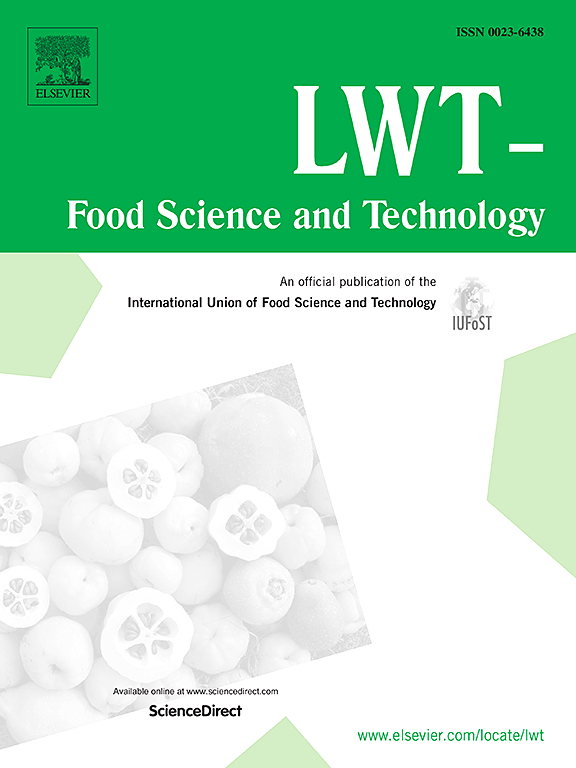Effects of different extraction methods on structure and functional characteristics of soluble dietary fiber from Dendrocalamus brandisii Munro shoots
IF 6
1区 农林科学
Q1 FOOD SCIENCE & TECHNOLOGY
引用次数: 0
Abstract
The extraction of soluble dietary fiber (SDF) from bamboo shoots was influenced by various techniques, including enzyme extraction (E), ultrasound-assisted enzyme extraction (UE), deep eutectic solvent extraction (D), and ultrasound-assisted deep eutectic solvent extraction (UD). While these methods were known to impact the yield and functional properties of SDF, it remained unclear how different extraction techniques affect the efficiency of SDF's bioactivity at the molecular level. In this study, we used a comparative approach to assess the physicochemical properties, microstructure, and functional properties of SDF obtained by these extraction methods. The results showed that UE-SDF achieved the highest yield (9.72 ± 1.01 g/100 g). Compared to E-SDF and D-SDF, both UE-SDF and UD-SDF exhibited a porous structure, lower molecular weight, and lower crystallinity after ultrasonic pretreatment, significantly enhancing their physical and chemical properties. Notably, UE-SDF demonstrated the best in vitro antioxidant effect and thermal stability, whereas UD-SDF excelled in water-holding, oil-holding, swelling, and bile acid adsorption capacities. In addition, significant differences in monosaccharide composition and molecular weight were observed between the four SDFs. Overall, our study provided valuable insights into how different extraction techniques affected the bioactivity of bamboo shoot-derived SDF, highlighting potential applications in the food industry.

求助全文
约1分钟内获得全文
求助全文
来源期刊

LWT - Food Science and Technology
工程技术-食品科技
CiteScore
11.80
自引率
6.70%
发文量
1724
审稿时长
65 days
期刊介绍:
LWT - Food Science and Technology is an international journal that publishes innovative papers in the fields of food chemistry, biochemistry, microbiology, technology and nutrition. The work described should be innovative either in the approach or in the methods used. The significance of the results either for the science community or for the food industry must also be specified. Contributions written in English are welcomed in the form of review articles, short reviews, research papers, and research notes. Papers featuring animal trials and cell cultures are outside the scope of the journal and will not be considered for publication.
 求助内容:
求助内容: 应助结果提醒方式:
应助结果提醒方式:


